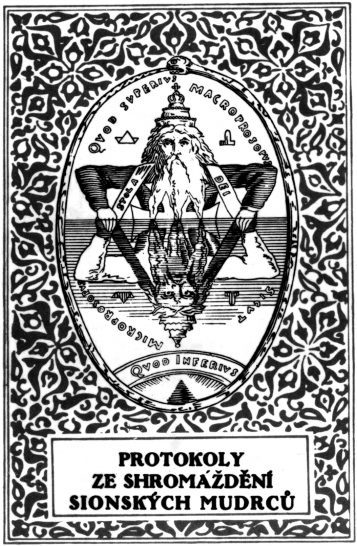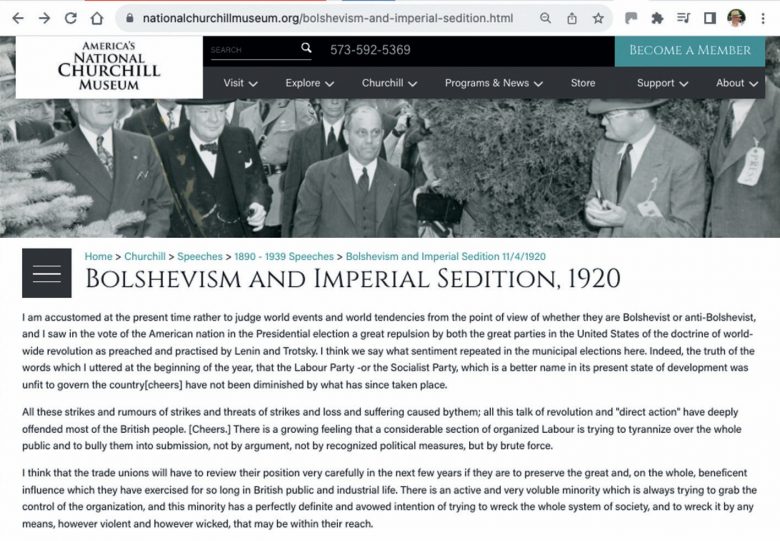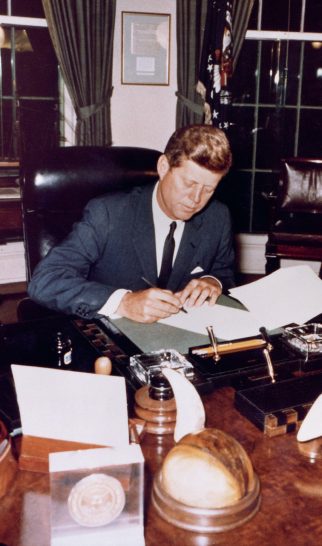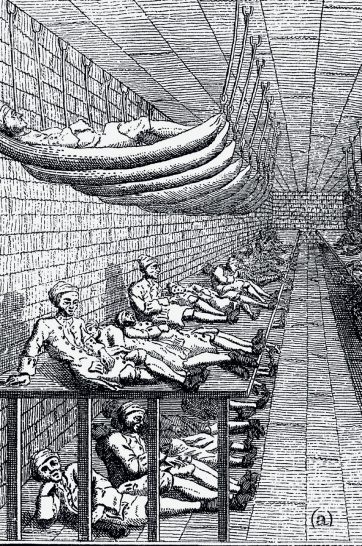Why were the Vietcong so hard to defeat?
Mark Rathbone examines why the USA failed to defeat the Vietcong in Vietnam
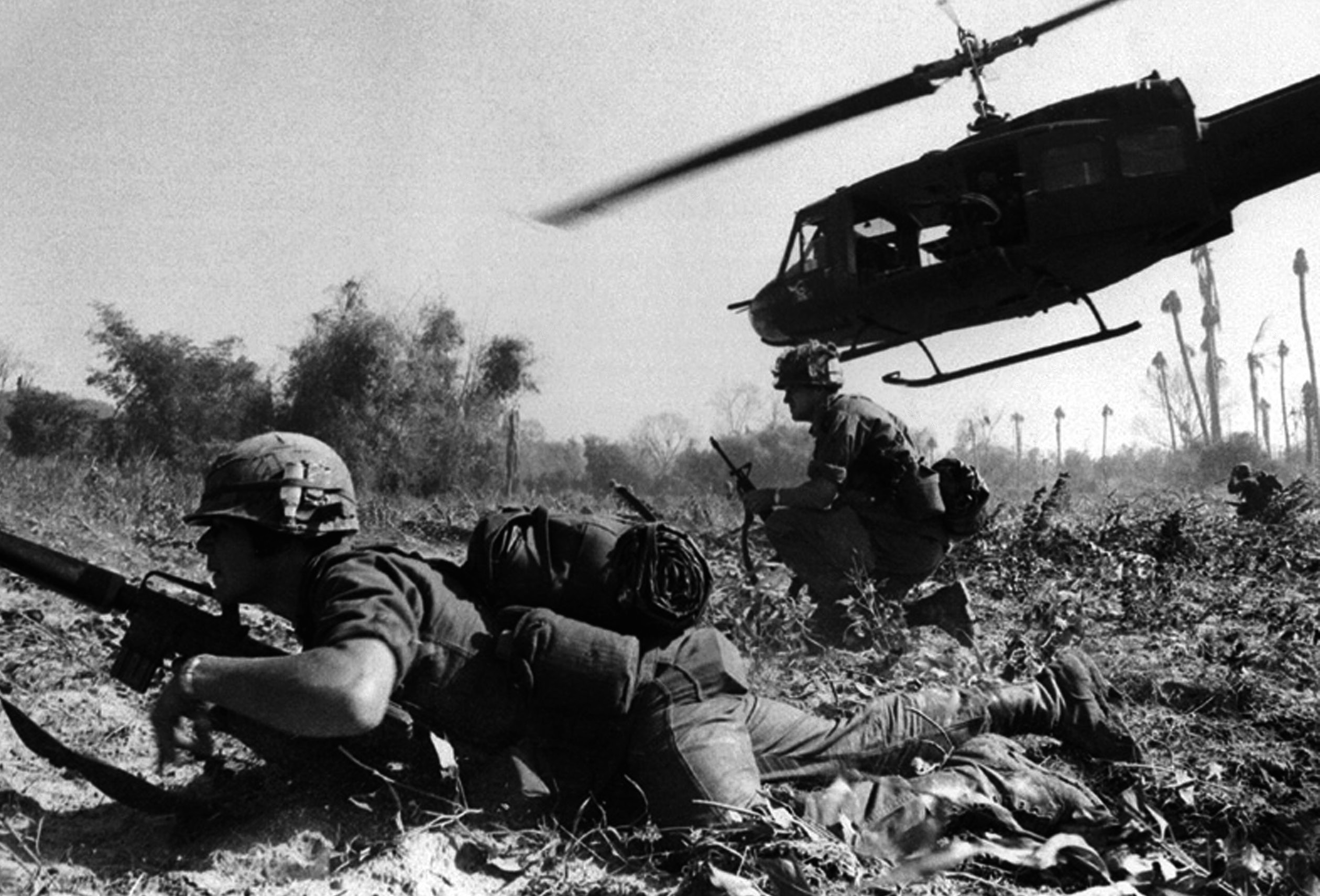
Source B
A symbolic image of US defeat: a Bell Huey helicopter is pushed over the side to make room for more helicopters to land on the aircraft carrier USS Okinawa during Operation Frequent Wind, the final evacuation of Saigon as North Vietnamese forces captured the city in April 1975
In the 1960s and 1970s, the USA was the most powerful nation on earth, rivalled only by the USSR, and its armed forces were the best equipped in the world. One potent symbol of US high-tech military prowess was the Bell ‘Huey’ helicopter in which its troops flew on missions into the interior of Vietnam to seek out and destroy Vietcong units.
Yet the Huey became a symbol of US defeat in April 1975 as some of the helicopters had to be pushed over the side into the sea to make room for more helicopters to land on US aircraft carriers during Operation Frequent Wind, the final evacuation of Saigon as South Vietnam collapsed. Why, after a decade of US military involvement in the Vietnam War, had the Vietcong proved impossible to defeat?
EXAM LINKS
AQA Conflict and tension in Asia 1950 –1975
Edexcel USA 1954–1975: Conflict at home and abroad
Guerrilla warfare
Guerrilla warfare is a strategy in which small, highly mobile groups of fighters use tactics such as ambushes, raids and sabotage to wear down larger regular forces using traditional weapons and tactics. It is particularly effective in jungles or mountainous regions which offer plenty of cover for the guerrillas, enabling them to launch deadly surprise attacks and then disappear into the surrounding area, avoiding open confrontation with their larger and better-armed enemy.
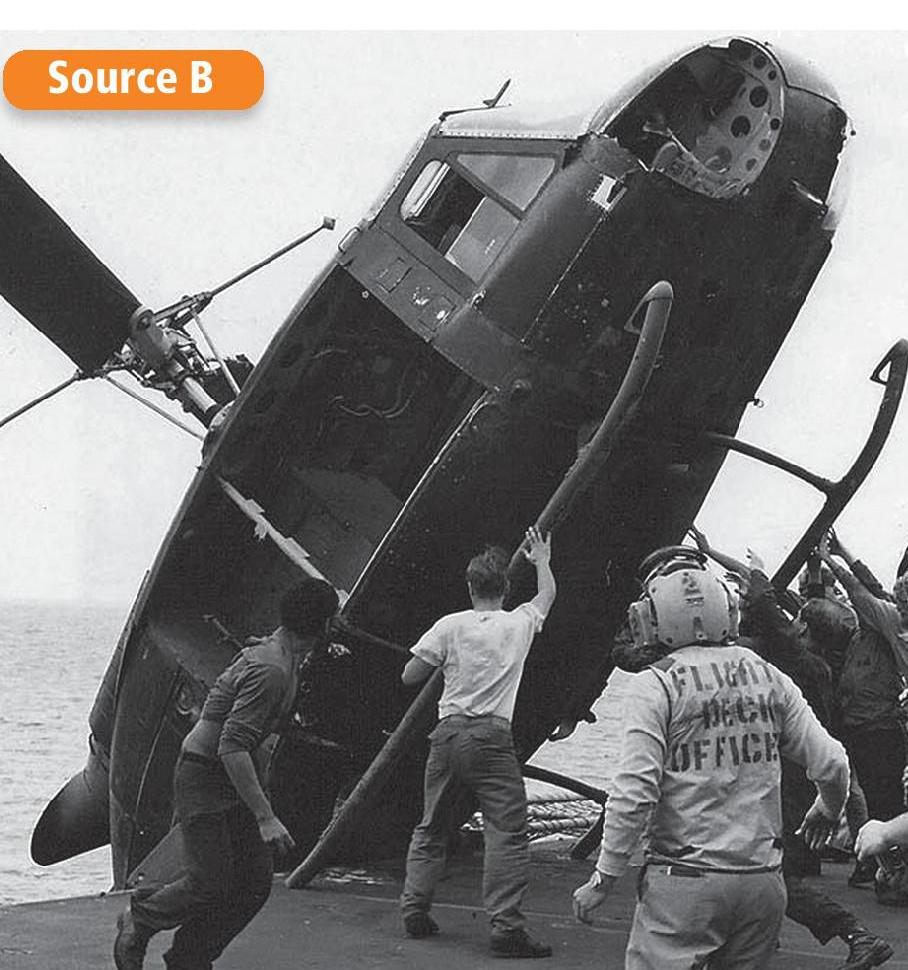
Source C
Terminology
Vietcong: (or National Liberation Front) Communist-led guerrillas who fought against the South Vietnamese government and the US army.
NVA: the North Vietnamese Army.
ARVN: the South Vietnamese Army.
Defoliants: powerful herbicides designed to clear whole areas of jungle.
Napalm: jellified petroleum, which stuck to its victims, causing terrible burns.
The Vietcong were experts at it. They knew the jungle in which they operated and had already used guerrilla warfare effectively against French colonial forces and then against the army of South Vietnam since 1946. Furthermore, they had the support of much of the rural civilian population of South Vietnam, so they could melt away into the villages, where it was virtually impossible to tell them apart from ordinary civilians.
Search-and-destroy missions
The Americans could and did defeat the North Vietnamese Army (NVA) in open warfare. At Plei Me in October 1965, for example, the Americans inflicted heavy casualties on NVA units, which were forced to retreat into Cambodia. But they found it very hard to get to grips with the Vietcong guerrillas. Their ability to attack suddenly, then to disappear into the jungle or among the civilian population made them formidable foes against which US high-tech weaponry was ineffective.
US troops went on search-and-destroy missions in Bell ‘Huey’ helicopters, which took them from their bases near the coast into the interior. They could clear the Vietcong from an area, but as soon as they flew away, there was nothing to stop the Vietcong from returning.
The ‘strategic hamlets’ policy
Moreover, the methods which the US forces employed to root out Vietcong guerrillas often had a devastating effect on the civilian population. The ‘strategic hamlets’ policy moved peasant families from their villages into fortified locations. One weakness of this strategy was that it was very difficult to tell guerrillas apart from innocent villagers. It was also impossible to guarantee that the strategic hamlets were free of Vietcong.
A second problem was that the people, not unreasonably, resented being forced to leave their villages www.hoddereducation.co.uk/hindsight and seeing their homes being torched. A famous BBC news report showed a Vietnamese peasant woman with all her possessions loaded onto an ox-cart — the noise from a US helicopter terrified the ox, which ran out of control, scattering the woman’s possessions behind it. The reporter commented that in essence the war in Vietnam was for the heart and mind of this woman.
Defoliants, napalm and war crimes
The destructiveness of weapons like defoliants and napalm was often counter-productive. Their use alienated the Americans from the local population and undermined efforts to win over their ‘hearts and minds’. In some cases, the frustration of US troops at their inability to get to grips with their enemy led them to commit war crimes against Vietnamese civilians, notably the massacre at My Lai on 16
March 1968, in which approximately 500 unarmed villagers were killed. Incidents like this, not surprisingly, made it easier for the Vietcong to find recruits and sympathisers among the civilian population.
Effective responses to counter US strategies
The Vietcong were also very effective in responding to US attempts to defeat them. US aircraft sprayed swathes of jungle with powerful defoliants of which the best known was Agent Orange. These caused all the trees and other vegetation to die, which meant that Vietcong fighters lost the cover they relied on to evade US troops. But they responded to the destruction of their cover by digging underground. Their simple dugouts quickly developed into elaborate tunnel systems, with underground dormitories, hospitals and arms dumps.
The Ho Chi Minh Trail
The development of the Ho Chi Minh Trail, an elaborate supply route from North Vietnam southwards through the jungles of Laos and Cambodia, was a response to American efforts to stop movement of supplies and troops directly across the border from North Vietnam to South Vietnam. The North Vietnamese kept supplies for the Vietcong fighters flowing down the Ho Chi Minh Trail using simple means of transport, including bicycles.

1 Research and write a paragraph about each of the following, which are referred to in the article:
■ Battle of Plei Me, 1965
■ strategic hamlets
■ My Lai massacre, 1968
■ Agent Orange
■ Ho Chi Minh Trail
■ fragging
2 Study Sources A and B. Explain what these two photographs tell us about the reasons for the defeat of the USA in the Vietnam War.
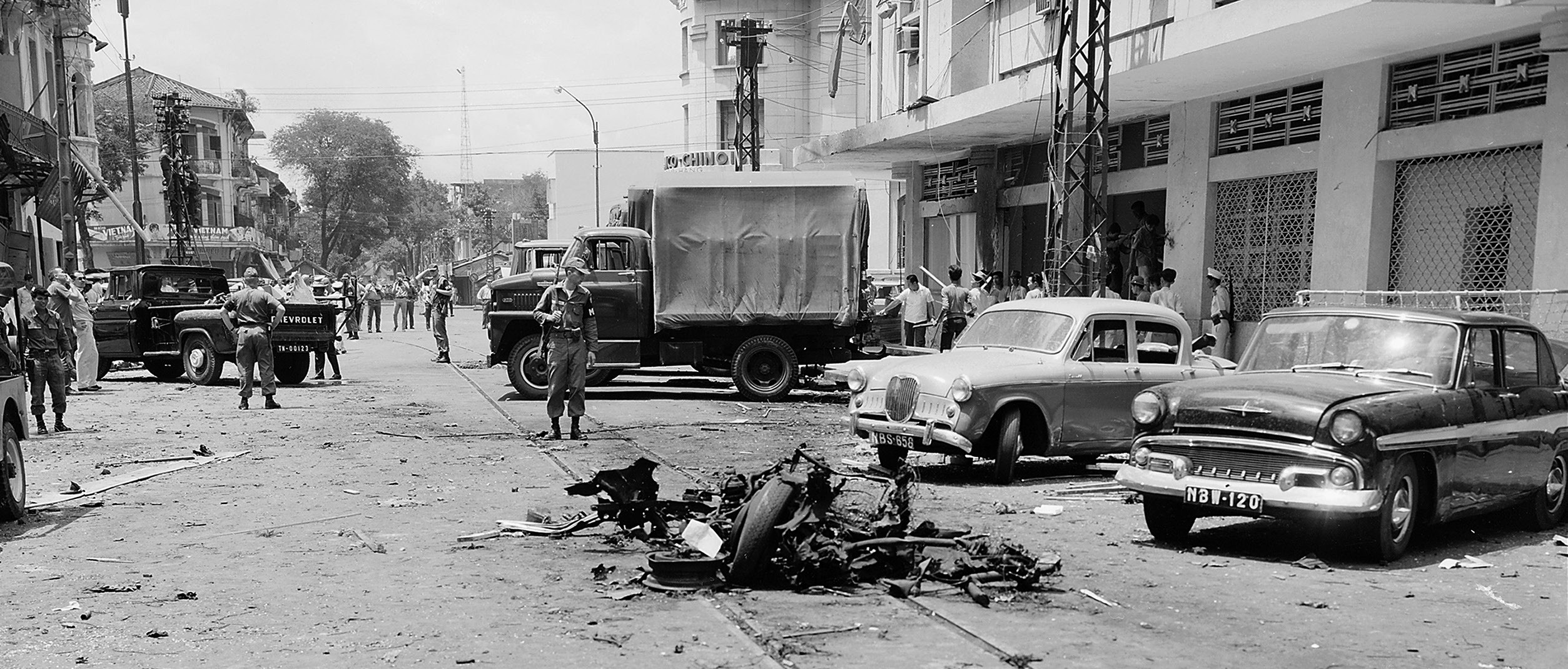
3 Study Sources D and E. Explain what these two photographs tell us about the reasons for the victory of the North Vietnamese in the Vietnam War.
4 Read Source F. To what extent does the fact that this speech praising the North Vietnamese as ‘a heroic people’ was made by their leader, Ho Chi Minh, undermine its reliability?
Rules of engagement imposed constraints on what US commanders could do about this. For example, after the US victory at Plei Me in October 1965, the American 1st Cavalry was not allowed to pursue their defeated adversaries into Cambodia.
The inability of US commanders to attack the Ho Chi Minh Trail and Vietcong bases in Cambodia and Laos remained a source of frustration for them throughout the war. The one large-scale US armed incursion into Cambodia, authorised by President Nixon in 1970, was not notably successful and arguably did more harm than good.
Deadly booby traps
The Vietcong were also ingenious at improvising simple but deadly booby traps from readily available materials. Thin branches covering a pit dug on a jungle trail would break when a US soldier stepped onto them, causing him to fall onto poison-tipped, sharpened bamboo poles at the bottom. A hand-grenade packed into a tin-can would explode when the trip-wire attached to it was triggered by a passing US soldier. A grenade, the detonator held in place by an elastic band, would be dropped into the fuel tank of a US army jeep or truck. It might remain there for weeks, until the elastic band, weakened by the petrol in the tank, would break causing the vehicle to explode without warning.
More than 10% of Americans who died in Vietnam were killed by booby traps like these. The knowledge that wherever they were in Vietnam, they might at any moment become the victim of an explosive device planted by a Vietcong fighter perhaps weeks before sapped the morale of US soldiers.
Commitment and determination
The Vietcong were fighting a revolutionary war, a war of national liberation. They had been fighting for the independence and freedom of their country for many years, first against the Japanese during the Second World War, then against the French from 1946 to 1954, and now against the USA.
Americans had once also fought for their freedom and self-government — against the British in the War of Independence. But that was in the 1770s and somewhere along the way they had lost both the determination which had enabled them to defeat a powerful enemy they saw as an oppressor and their understanding of what it means to be fighting for your country’s independence.
The North Vietnamese
The Vietcong, and the North Vietnamese in general, had a determination which the South Vietnamese and the Americans lacked. Their readiness to take far higher levels of casualties than either the Army of the Republic of Vietnam (ARVN) or the Americans was another result of their dedication to their cause.
Source F
Ho Chi Minh’s speech to the National Assembly of North Vietnam in 1965:
Our Vietnamese people are a heroic people. Over the past ten years or more, our 14 million compatriots in the South have overcome all hardships, made every sacrifice and struggled very valiantly. Starting with their bare hands, they have seized guns from the enemy to fight against the enemy, have recorded victory after victory, and are launching a continual attack inflicting upon the US aggressors and the traitors ever greater defeats and causing them to be bogged down more and more deeply. The greater their defeats, the more frantically they resort to the most cruel means, such as using napalm bombs and toxic gas to massacre our compatriots in the South.
While the North Vietnamese revered their leader Ho Chi Minh as a national hero, the South Vietnamese had no love for their own government. US troops often found it hard to understand why they were not welcomed by the South Vietnamese people, who they were there to ‘save’ from Communist aggression. Although the corrupt regime of Ngo Dinh Diem had ended in his assassination in 1963, successive governments were weak yet oppressive, often short-lived and did little to earn the loyalty of the South Vietnamese people.
US troops
In contrast to Vietcong fighters, US troops were posted to Vietnam on a 365-day tour of duty, so that most American soldiers in Vietnam were young and inexperienced. The realities and frustrations of fighting so elusive an enemy led to defeatism, low morale and lack of commitment.
Search-and-destroy missions became ‘search and avoid’ as surviving to the end of their tour of duty became the main aim of many US soldiers. Murderous attacks by GIs on officers who tried to instil military discipline, known as ‘fragging’, became alarmingly frequent. The widespread incidence of drug abuse was another symptom of poor morale. In 1970, there were 11,058 reported cases of drug abuse among US servicemen in Vietnam, of which 1,146 involved heroin or other hard drugs.
Help from China and the USSR
While the image of the North Vietnamese as plucky underdogs resisting the might of the US army has some truth, they did have extensive help from their Communist allies in Moscow and Peking. The guns the Vietcong carried, the grenades they used to make booby traps and even the bicycles they used to carry supplies on the Ho Chi Minh Trail were Chinese or Russian.
Summary
■ Despite the military strength of the USA, the Vietcong’s guerrilla warfare proved extremely effective in Vietnam.
■ US attempts to get to grips with it, such as the strategic hamlets policy and the use of defoliants, were often counter-productive.
■ In contrast, the Vietcong were highly adept at responding to US attempts to defeat them, for example digging elaborate tunnel systems to escape the effects of defoliation and devising simple but effective booby traps.
■ The fact that the Vietcong were fighting for the independence of their country gave them a commitment and determination which the US troops lacked.
■ The Vietcong also benefited from help from China and Russia.
Source G
A veteran of the US Marine Corps, interviewed in 1997, recalling a conversation in Vietnam in 1966:
This one sergeant of mine, Prior was his name, said, ‘You know, Lieutenant, I don’t see how we’re ever going to win this.’ And I said, ‘Well, Sarge, I’m not supposed to say this to you as your officer — but I don’t either!’ So there was this sense…that we just couldn’t see what could be done to defeat these people.
Quoted in Cold War by Jeremy Isaacs and Taylor Dowling, 1998
Source H
NLF and North Vietnamese combatants, battling against alien invaders, fought tenaciously, resorting to sabotage and stab-in-the-back assaults on American soldiers in the night. Americans, with awesome firepower at their disposal, dropped ever more napalm and Agent Orange and poured bombs on villages and enemy installations. Commanders in the field often called in the planes, helicopters, and heavy artillery wherever they thought the enemy might be. As an American major explained in 1968 following the obliteration by American firepower of Ben Tre, a village in the Mekong Delta, ‘We had to destroy the village in order to save it.’
From Grand Expectations: The United States, 1945–1974 by James T. Patterson, 1996
Source I
Communist determination, heroism and ingenuity were all vital to the American defeat.
From The USA and Vietnam 1945–75 by Vivienne Sanders, 1998
The Vietcong had some powerful friends. A US invasion of North Vietnam might have led to victory, but no US president was prepared to authorise this, for fear that it would lead to direct intervention by China, as had happened in the Korean War.
Conclusion
The problems of the Americans, such as the limitations of their high-tech weapons, the weakness of their South Vietnamese ally and the growing opposition to the war in the USA, were significant. However, the most powerful reasons for the eventual victory of North Vietnam were the effectiveness of the Vietcong’s guerrilla warfare, their resourceful responses to counter US strategies and their commitment and determination, as well as the support they had from China and Russia. HS
5 Read Source G. How is the reliability of this source affected by the fact that the veteran is speaking more than 30 years after the events he describes?
6 Read Source H. This is a secondary source written by a historian in the 1990s. Does this make it more or less reliable than primary sources such as Sources E and F?
7 Read Sources F, G and H. To what extent are these three sources in agreement about the Vietnam War, despite their very different provenances?
8 Study the article and all the sources.
Were ‘Communist determination, heroism and ingenuity’ more important than US and South Vietnamese weaknesses and mistakes in deciding the outcome of the war? Explain your answer in detail.


